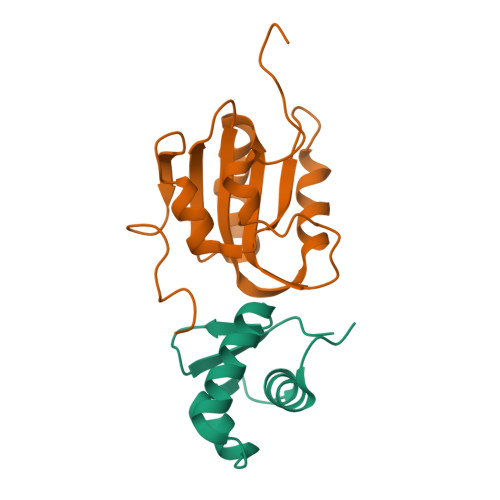Insights into hRPA32 C-terminal domain--mediated assembly of the simian virus 40 replisome.
Arunkumar, A.I., Klimovich, V., Jiang, X., Ott, R.D., Mizoue, L., Fanning, E., Chazin, W.J.(2005) Nat Struct Mol Biol 12: 332-339
- PubMed: 15793585
- DOI: https://doi.org/10.1038/nsmb916
- Primary Citation of Related Structures:
1Z1D - PubMed Abstract:
Simian virus 40 (SV40) provides a model system for the study of eukaryotic DNA replication, in which the viral protein, large T antigen (Tag), marshals human proteins to replicate the viral minichromosome. SV40 replication requires interaction of Tag with the host single-stranded DNA-binding protein, replication protein A (hRPA). The C-terminal domain of the hRPA32 subunit (RPA32C) facilitates initiation of replication, but whether it interacts with Tag is not known. Affinity chromatography and NMR revealed physical interaction between hRPA32C and the Tag origin DNA-binding domain, and a structural model of the complex was determined. Point mutations were then designed to reverse charges in the binding sites, resulting in substantially reduced binding affinity. Corresponding mutations introduced into intact hRPA impaired initiation of replication and primosome activity, implying that this interaction has a critical role in assembly and progression of the SV40 replisome.
Organizational Affiliation:
Department of Biochemistry, Vanderbilt University, Nashville Tennessee 37232-8725 USA.



















